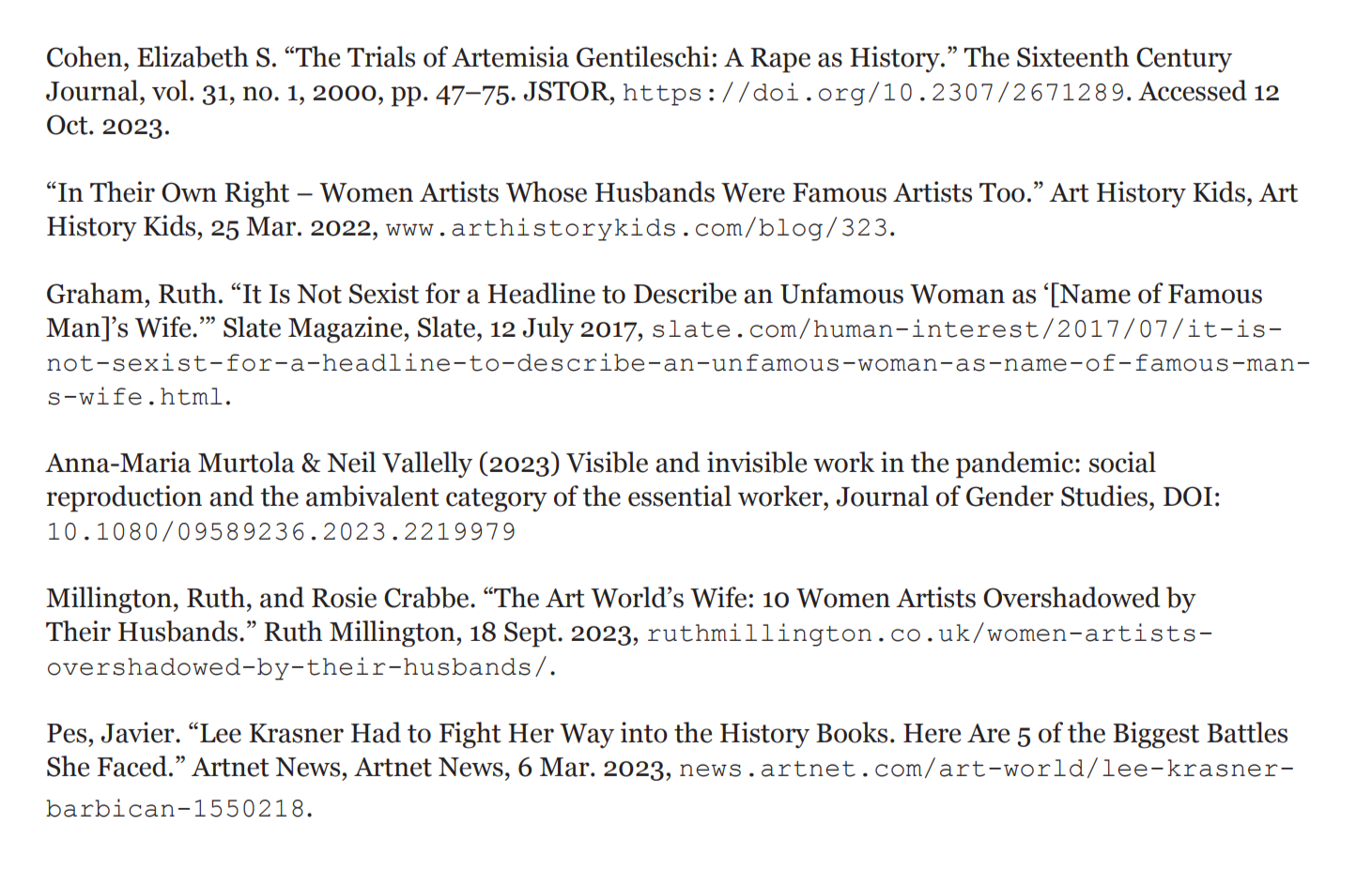The Wife of the Artist and the Artist as Wife
by Michelle Sharp
There is a long history of women’s artwork being overshadowed by their partners, particularly husbands. Frida Kahlo, Jo Hopper, and even Artemisia Gentileschi’s works were diminished by men in their lives.1 Rather than being seen as individuals, these women are (or were in their lifetime) regarded as an accessory to another personality.

In recent history, many may remember outcries of media headlines referring to women as “the wife of So and So” or “Mrs. Famous Artist” rather than a person and achiever in her own right.2 There are arguments that this portrayal isn’t based in sexism, but rather in common journalism practices: naming the ‘more famous person’ in the headline is the hook that grabs attention.3 However, the story continuously seems to shift back into women doing invisible work, emotional labor, and setting her own drive aside in order to support her partner’s goals. Many women, especially mothers, identify with this problem in their immediate lives; household chores and upkeep, meal planning, caregiving, holding space for others’ feelings, and working to prioritize the needs and events of each family member take a toll. Invisible labor was largely brought to light in the U.S. during the beginning of the pandemic; changes in roles and blurring of home/work spaces made the invisible more visible and highlighted inequities between many partners who shouldered those tasks.4 In the same way, famous male artists’ biographies conveniently leave out the figures that supported their work. Rotraut Klein-Moquay, Elizabeth Siddall, and Lee Krasner spent a significant amount of time assisting, managing, and/or modeling for their husbands, time that could have gone to their own work.5 Krasner is often credited with the rise of her husband’s work due to her “energetic promotion and stubborn refusal to sell cheaply”; likewise, she put his working space in front of her home, only moving from a bedroom studio space to his large outbuilding space after his death.6 These behaviors from so many women indicate a pattern of wives serving their partners’ goals while putting their own on the backburner. Is it possible that this is simply a history of altruism, of sacrificial love to another? Possibly. Or is it related to a history of male-dominated economic spheres, patriarchal societal standards, and women’s denial to capital and financial independence? More likely. When the behaviors extend to women of partners in all fields and walks of life, we can take a pretty good guess that a whole system is at work.
The list of artist wives who were artists’ wives goes far beyond the few I have mentioned and we can only guess at others whose names have been lost to history or written off as a hobby in her spare time.


Michelle Sharp (b. 1992) is an artist currently working in the Fox Valley area of Wisconsin. She works primarily in bookmaking media, photography, and writing. Michelle is inspired by the mundane, acts of sharing & discovery, literature, and structured systems.



